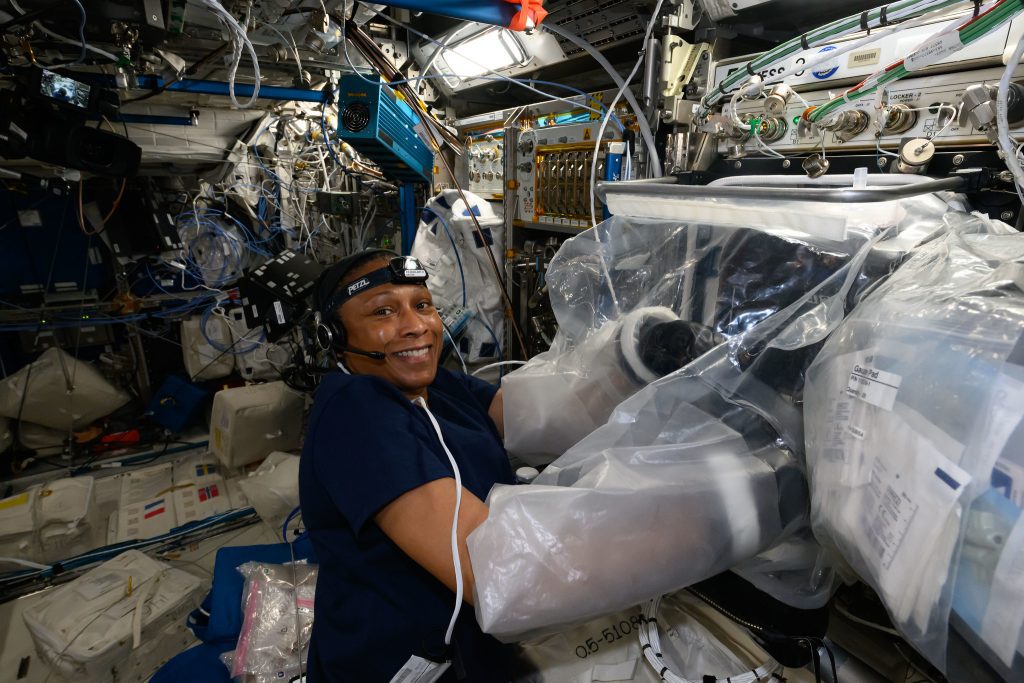WASHINGTON — NASA is refining its plan to address a study on science research in space, trying to balance ambitious goals with limited budgets.
The study, released in September,, identified 11 important science questions in three areas: adjusting to space, living and traveling in space, and studying things that can't be seen on Earth because of gravity or other limitations. It also identified two specific major research projects for NASA to do in those areas.
In a recent interview, Lisa Carnell, who runs the biological and physical sciences (BPS) division at NASA, said the agency is working to analyze and respond to the recommendations in the study. This includes a continuing approach to connect programs to key science questions.
“This will help us develop a plan based on the study’s content that will let us explain more clearly to Congress and others, both inside and outside of NASA, why we’re doing the science we’re doing,” she said.
She noted that current research supported by BPS is already dealing with many of the key science questions identified in the study. “In the near term, those are quick wins, so to speak,” she said. “We’ll keep building on those.”
According to Carnell, it will take a while for NASA to try the two research projects that the study recommended: Bioregenerative Life Support Systems, or BliSS, and Manufacturing Materials and Processes for Sustainability in Space, or MATRICES. She compared those projects, which will cost billions of dollars, to major missions in other parts of NASA’s Science Mission Directorate.
“I’m trying to find some smaller goals that lead to those larger projects,” she said.
Those efforts are made difficult by NASA’s modest BPS budget of about $85 million per year. One of the main suggestions of the study was for NASA to increase that budget by 10 times, which the report argued would bring funding back to the levels of the 1990s.
“That budget suggestion has been the topic of the most discussion around the study,” she said. It comes as NASA, overall, and its science directorate in particular, has dealt with budget limits that have affected plans for spending increases.
Carnell said reaching that goal would need a 30% yearly increase in the BPS budget over the decade. She said she would push for budget increases while being “realistic” about what the division can achieve. “A 10-fold increase is probably very optimistic. If we even got half of that, it would be a success for BPS.”
She said that the suggestion for a budget increase is still valuable, even if it can’t be done in the current financial situation. “I think setting a significant goal like that, a 10-fold increase, is fine when you have the science and the data to support it,” she said. “And they did that. They mapped out the cost of doing these types of missions and projects.”
NASA faces another challenge when it comes to carrying out the decade-long plan: transitioning from the International Space Station, where BPS conducts much of its research, to future commercial low Earth orbit destinations, or CLDs. At the same time, the agency aims to increase research related to human missions on the moon and Mars.
Carnell emphasized the need to find a balance in the strategy to maintain microgravity research while also focusing on exploration goals and objectives.
She mentioned that her division is collaborating closely with NASA’s CLD program to ensure that the program's requirements for commercial stations align with the division’s research priorities. She believes her division will be among the primary users at the start of these platforms.
According to the decadal survey, some of the 11 key science questions it identified could be phased out over the next decade, as pointed out by the survey’s co-chairs, Rob Ferl of the University of Florida and Krystyn Van Vliet of Cornell University, during a presentation about the report to a National Academies committee in March.
Carnell expressed the difficulty of achieving this, citing reasons beyond budgets alone. She noted that while science is never-ending, the division's strategy to address the decadal will aim to deal with this. She suggested that investing in future science may require a focus on deep space, even though there is always more science to pursue.









